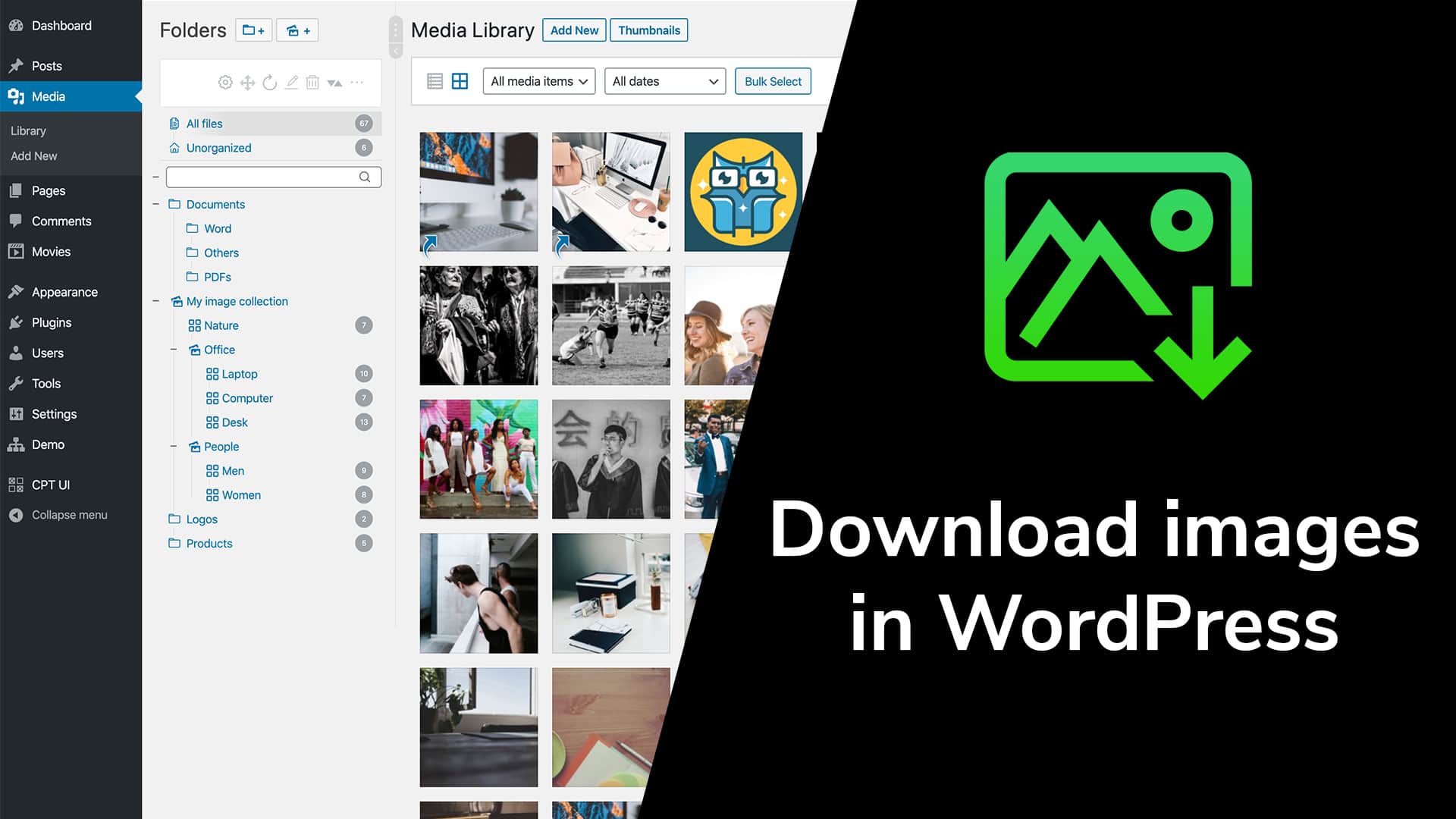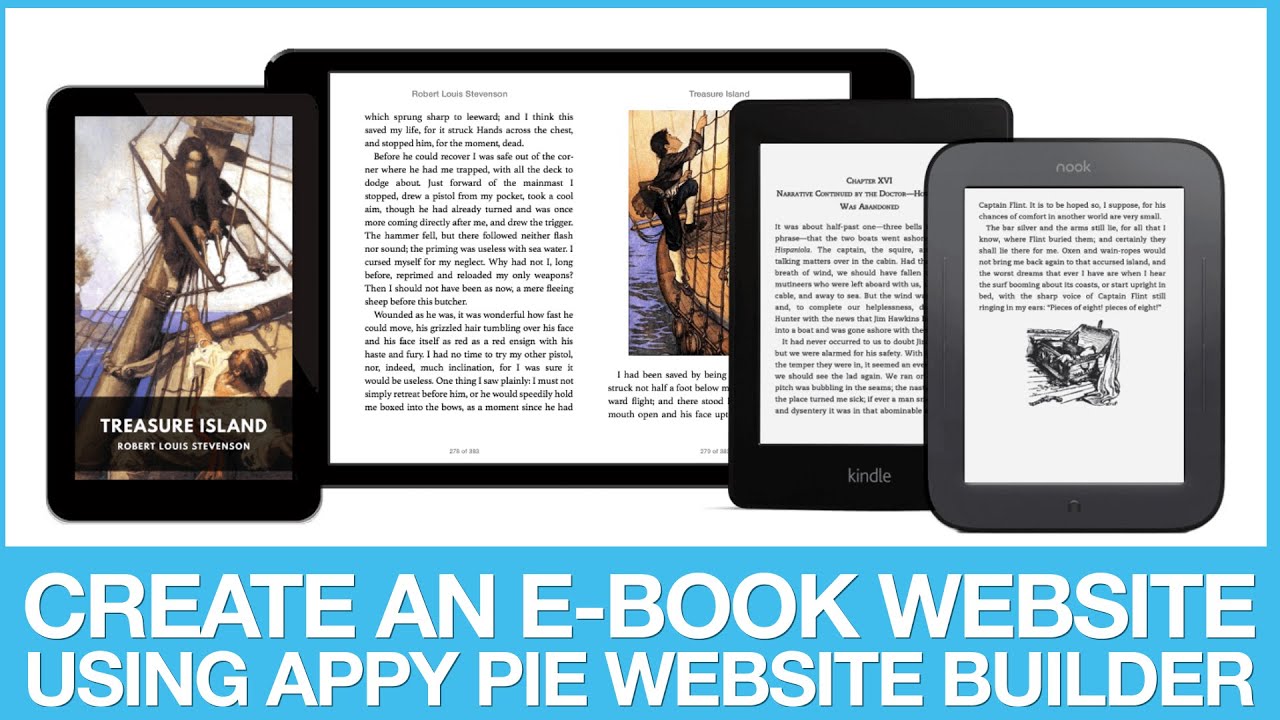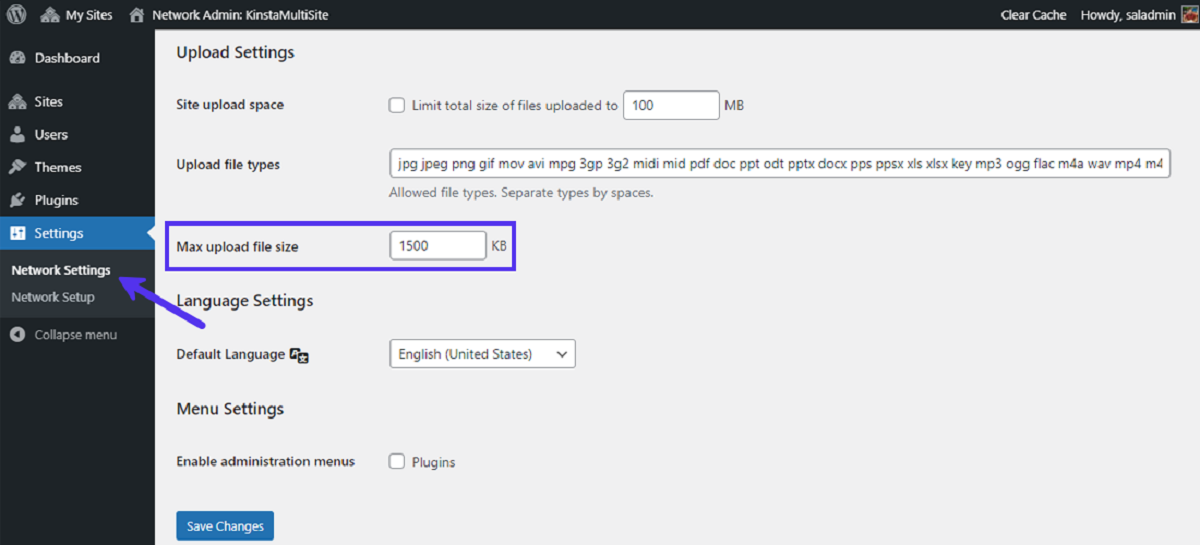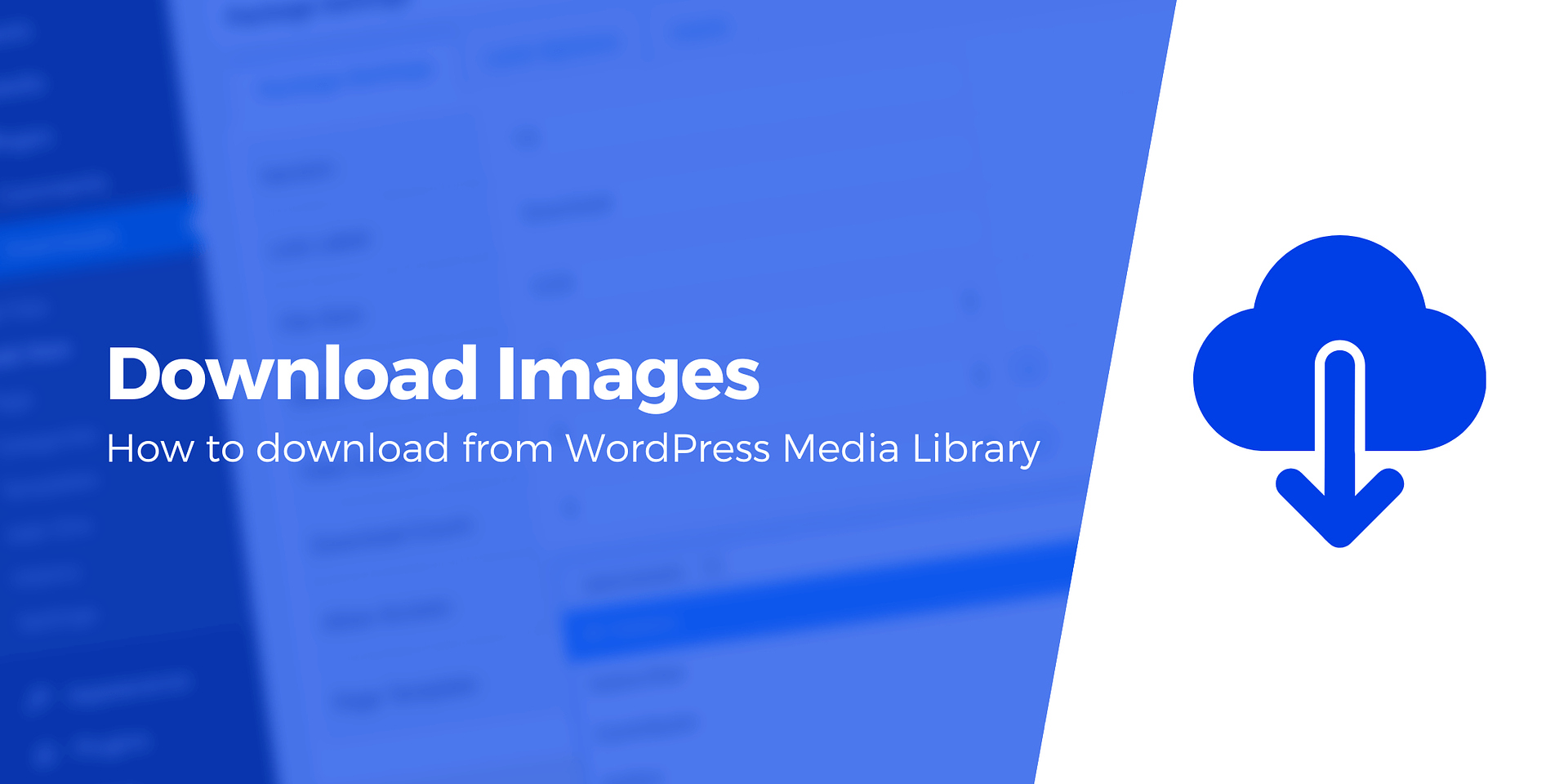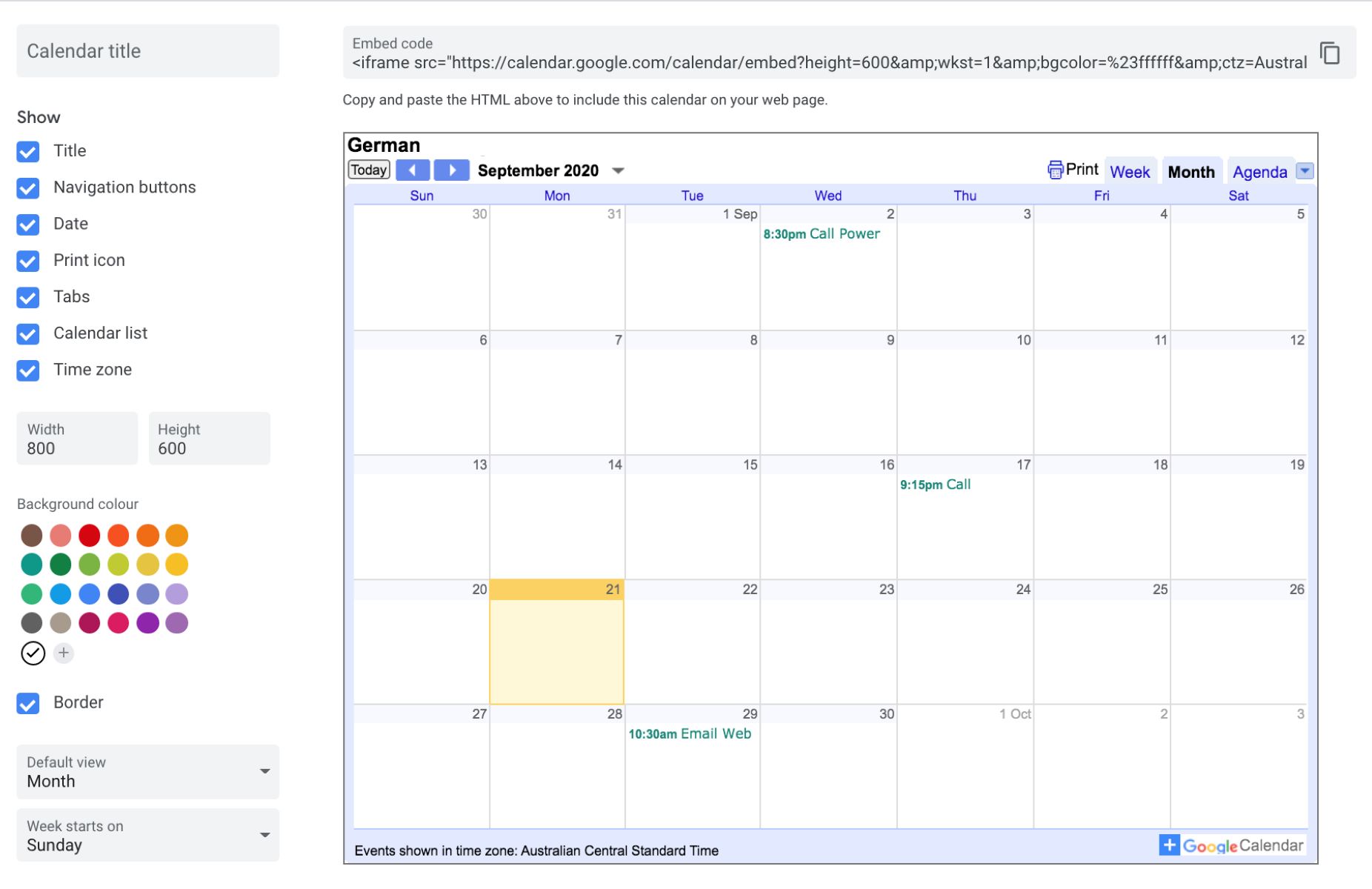Introduction
Welcome to the world of WordPress, the popular content management system loved by millions of users worldwide. Whether you’re a blogger, small business owner, or a website developer, WordPress offers a user-friendly platform to showcase your content and media.
One of the many advantages of using WordPress is the ease with which you can manage and display different types of media, from images and videos to audio files and documents. In this article, we will explore various methods on how to download media from WordPress, allowing you to have full control over your website’s assets.
With WordPress, you can upload media files directly through the built-in Media Library, which provides a simple and convenient way to manage your files. Additionally, you can also utilize the right-click option to download media files directly from the front-end of your website.
If you prefer a more hands-off approach, there are WordPress plugins available that can extend the functionality of your media management, providing additional options for downloading media files. And if you’re a developer or have access to your website’s FTP server, you can utilize the File Transfer Protocol method to directly download media files from the server itself.
Throughout this article, we will explore each method in detail, providing step-by-step instructions and explanations to ensure you have a comprehensive understanding of how to download media from WordPress. Whether you’re a novice or an experienced user, there’s a method that suits your needs and technical abilities.
So, let’s dive in and discover how you can effortlessly download media from your WordPress website, empowering you to manage and share your content effectively.
Method 1: Using the Built-in Media Library
WordPress provides a convenient and intuitive Media Library that allows you to upload, manage, and download media files directly from your website’s dashboard. Follow these steps to download media files using the built-in Media Library:
- Log in to your WordPress admin dashboard.
- Click on “Media” in the left-hand menu.
- You will be redirected to the Media Library, which displays all the media files you have uploaded to your website. Browse or use the search bar to locate the desired file.
- Hover over the file and click on the “Edit” button that appears beneath it.
- In the file details page, you will see a “Download” button in the right sidebar. Click on it to initiate the download.
- The file will be downloaded to your computer’s default download location, or you can choose a specific location to save it.
By following these steps, you can easily download media files from your WordPress website directly through the Media Library. This method is especially useful when you need to access a specific file or want to make a backup of your media assets.
Remember to keep your Media Library organized by using folders, tags, or categories, making it easier for you to locate and manage your files in the long run. Utilizing the built-in search functionality can also help you find specific media files quickly.
Now that we have explored the first method, let’s move on to the next method of downloading media files from WordPress.
Method 2: Using the Right-Click Option
Another convenient way to download media files from your WordPress website is by utilizing the right-click option. This method allows you to download media files directly from the front-end of your website without accessing the WordPress admin dashboard. Follow these steps to download media files using the right-click option:
- Visit your WordPress website and navigate to the page or post where the media file is located.
- Locate the media file you want to download.
- Right-click on the media file and a context menu will appear.
- Select the “Save Image As” or “Save Link As” option, depending on the type of media file you are downloading.
- Choose a location on your computer where you want to save the file, and click “Save”.
The media file will be downloaded to the specified location on your computer, allowing you to access it whenever you need it.
This method is particularly useful when you want to quickly download a media file without the need to navigate through the WordPress admin dashboard. It gives you the flexibility to download files from any device or browser that supports right-click functionality.
Keep in mind that the availability of the right-click option may vary depending on your website’s configuration and theme settings. Some themes or plugins may disable the right-click functionality to protect their content. If you encounter any issues with the right-click option, you can try an alternative method or consult your website administrator or developer for assistance.
Now that we have explored the second method, let’s move on to the next method of downloading media files from WordPress.
Method 3: Using a WordPress Plugin
If you’re looking for additional functionality and flexibility in managing and downloading media files from your WordPress website, using a WordPress plugin is an excellent option. There are various plugins available that can enhance your media management capabilities and facilitate easy downloading of media files. Follow these steps to download media files using a WordPress plugin:
- Log in to your WordPress admin dashboard.
- Click on “Plugins” in the left-hand menu, and then select “Add New”.
- In the search bar, enter the name of the plugin you want to use for media management and downloading.
- Once you have found the desired plugin, click on the “Install Now” button next to it.
- After the installation is complete, click on the “Activate” button to enable the plugin.
- Depending on the plugin you have installed, you may need to configure its settings or access its features through a dedicated menu in the WordPress admin dashboard.
- Once the plugin is set up, you can navigate to the Media Library or the specific page or post where the media file is located, and you will find additional options for downloading the file.
- Click on the corresponding download button or option provided by the plugin to initiate the download process.
- The media file will be downloaded to your computer’s default download location or the location you specified.
Using a WordPress plugin gives you more control and customization options for managing and downloading media files. You can explore different plugins to find one that best matches your requirements. Plugins may offer advanced features such as batch downloads, customizable download links, or even integrated download statistics and tracking.
Remember to choose plugins from trusted sources and keep them updated to ensure compatibility with your WordPress version and other plugins installed on your website. Additionally, always test the plugin’s functionality and compatibility before implementing it on a live website to avoid any unforeseen issues.
Now that we have explored the third method, let’s move on to the next method of downloading media files from WordPress.
Method 4: Using FTP
If you have access to your WordPress website’s FTP (File Transfer Protocol), you can directly download media files from the server. This method is ideal for advanced users or developers who are comfortable navigating the server’s file structure. Follow these steps to download media files using FTP:
- Obtain your FTP credentials, including the host, username, password, and port number.
- Download and install an FTP client software on your computer, such as FileZilla, Cyberduck, or WinSCP.
- Launch the FTP client and enter your FTP credentials in the appropriate fields.
- Connect to your WordPress website’s server using the FTP client.
- Navigate to the folder where your media files are stored. Typically, media files can be found in the “wp-content/uploads” directory.
- Locate the specific media file you want to download and right-click on it.
- Select the “Download” or “Download to” option to initiate the download process.
- Choose a location on your computer where you want to save the file, and click “Save”.
The selected media file will be downloaded from the server to your specified location, allowing you to access and use it as needed.
Using FTP to download media files gives you direct access to your website’s server, making it useful in scenarios where you need to retrieve specific files or make bulk downloads. However, it’s important to be cautious and exercise care when working with your website’s file structure via FTP to avoid unintended modifications or deletions.
Make sure to have proper backups of your website’s files before proceeding with any FTP actions, and consult with your website administrator or developer if you have any concerns or need assistance with FTP.
Now that we have explored all the methods, let’s summarize what we have learned in the next section.
Conclusion
In this article, we have explored different methods on how to download media from WordPress, providing you with a range of options to suit your needs and technical abilities. Whether you prefer using the built-in Media Library, utilizing the right-click option, leveraging WordPress plugins, or working with FTP, each method offers its own advantages and can help you efficiently manage and download your website’s media files.
The built-in Media Library provides a straightforward way to download media files directly from your WordPress admin dashboard, while the right-click option allows for quick downloads from the front-end of your website. WordPress plugins offer additional functionality and customization options, allowing you to enhance your media management capabilities and streamline the downloading process. And for advanced users and developers, FTP provides direct access to the server, enabling you to download media files from the file structure.
To ensure a smooth download experience, it’s important to keep your Media Library organized, utilize proper folder structures, and use descriptive file names. Additionally, regularly backing up your media files and keeping your WordPress installation, themes, and plugins up to date is crucial for maintaining a secure website.
Remember to consider your specific requirements, technical expertise, and the nature of the media files you need to download when selecting the most suitable method. Experiment with different approaches to find the one that fits your workflow and provides the desired level of control and convenience.
By mastering the art of downloading media files from WordPress, you can effectively manage and utilize your website’s assets, enhancing your content creation and presentation. So, whether you’re a blogger, business owner, or website developer, put these methods to practice and enjoy the seamless experience of downloading media files from your WordPress website.







